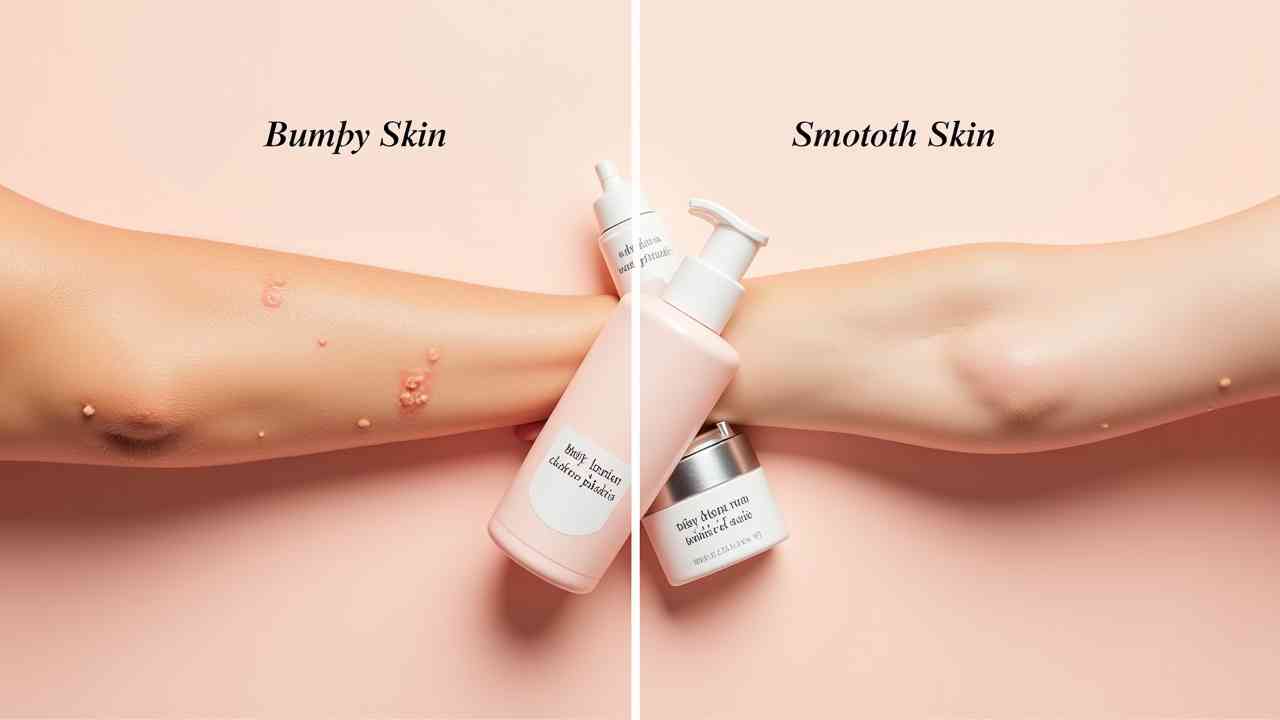
🧪 The Best Treatments for Keratosis Pilaris (A Dermatologist's Guide)
🧪 A Dermatologist's Guide: The Best Treatments for Keratosis Pilaris 🧪
Keratosis Pilaris (KP), often called "chicken skin" or "strawberry skin," is an incredibly common and completely harmless genetic condition. It presents as small, rough, and sometimes red bumps, usually on the back of the upper arms, thighs, and legs. While you can't cure KP, you can manage it very effectively.
So, what are the best treatments for keratosis pilaris? The secret is a consistent, two-part strategy: gentle exfoliation to remove the bumps and intense moisturization to soften the skin. This guide will break down the gold-standard ingredients and routines recommended by dermatologists. ✅
🤔 First, What Causes Keratosis Pilaris?
KP is caused by the buildup of a protein called keratin (the same protein that makes up your hair and nails). This excess keratin forms a hard plug that blocks the opening of a hair follicle, resulting in the tiny, rough bump you can feel and see. This condition tends to be worse in dry air, which is why it often flares up in the cool, dry autumn and winter months. 🍂
- The #1 Treatment: Chemical Exfoliants
The single most effective way to treat KP is with a chemical exfoliant. These are acids that work by gently dissolving the keratin plugs and the "glue" holding dead skin cells together. Look for body lotions or washes that contain these powerhouse ingredients:
- Lactic Acid (AHA): This is a superstar for KP. It's an Alpha-Hydroxy Acid that not only exfoliates the surface but is also a humectant, meaning it draws moisture into the skin.
- Salicylic Acid (BHA): This Beta-Hydroxy Acid is oil-soluble, which is its magic property. It can penetrate deep inside the hair follicle to dissolve the keratin plug from within.
- Urea: This is a fantastic 2-in-1 ingredient. At high concentrations (10-20%+), it is a keratolytic, meaning it breaks down the hard keratin plugs. It's also a powerful moisturizer.
- Glycolic Acid (AHA): Another great AHA that is very effective at smoothing the skin's surface and improving its texture.
- What About Physical Scrubs?
This is where many people go wrong. It can be tempting to try and scrub the bumps away, but using a harsh physical scrub (like one with crushed pits or large salt crystals) can be very damaging. It often causes irritation and inflammation, making the redness of KP much worse.
If you prefer a physical scrub, you must be very gentle. The safest options are:
- A soft washcloth or a gentle exfoliating mitt.
- A mild scrub with fine, dissolvable particles like sugar or soft jojoba beads.
- The Crucial Second Step: Moisturize, Moisturize, Moisturize!
Exfoliation is only half the battle. KP thrives on dry skin. You must apply a high-quality moisturizer to the area every single day. This softens the skin and supports the skin barrier.
The Pro Tip: Apply your moisturizer to damp skin right after you get out of the shower. This locks in the moisture. For the best results, use one of the exfoliating lotions mentioned above (with Lactic Acid or Urea) as your moisturizer. On days you're not using an acid, use a simple, thick, fragrance-free barrier cream with ingredients like ceramides.
☀️ What is the Most Important Rule of All?
This is non-negotiable. All of these exfoliating acids will make your skin more sensitive to the sun. You must be diligent about applying a broad-spectrum sunscreen with at least SPF 30 to any treated areas (like your arms) that will be exposed to the sun. This is the only way to prevent sun damage and dark spots. ✨